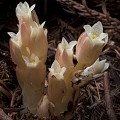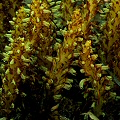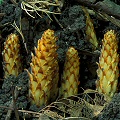Q: Mycotrophic (Saprophytic) plants
A: Repeat after me, "These are not carnivorous plants."
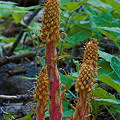 Pterospora andromedea
Pterospora andromedea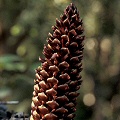 Kopsiopsis strobilacea
Kopsiopsis strobilacea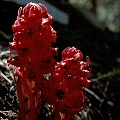 Sarcodes sanguinea
Sarcodes sanguinea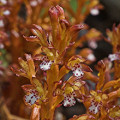 Corallorhiza maculata
Corallorhiza maculata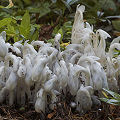 Monotropa uniflora
Monotropa uniflora
Like the parasitic plants in the previous FAQ page, mycotrophic plants do
not make their own food--instead, they survive off dead and decaying plant material.
They are still plants, oh yes, but they get their nutrients from the
nonconventional source derived from their dead and rotting brethren.
How do mycotrophs perform this clever if unseemly feat? They do so with the help of fungi, usually
a fungus in the genus Armillaria. The fungus attacks and digests the dead plant
matter, and the mycotrophic plant absorbs the nutrients from the fungus. In effect, the mycotrophic plant is a
parasite on the fungi!
Such plants are frequently called "saprophytes"
but this is incorrect because the term
saprophyte is more correctly used only for the fungi and not the plants participating in the
activity.
Since these plants do not produce their own food, they do not have green pigment. that is why the plants
shown on this page have some spectacular and amazing colors.
If you are walking in the woodlands of North America, the most common
mycotrophic plants you are likely to encounter are either pinedrops
(Pterospora andromedea, in the Ericaceae), or coral roots
(Corallorhiza species). Coral roots are
essentially impossible to grow, so do not collect them. Just look and enjoy.
Corallorhiza and many of the other mycotrophic plants have a serene beauty that
is quite subtle, so you have to get close to them to appreciate their beauty.
But find the time to do so, the next time you find a mycotrophic plant. It is worth it!
Page citations: Mabberley, D.J. 1987; Raven, P.H., et al. 1981; personal
observations.
